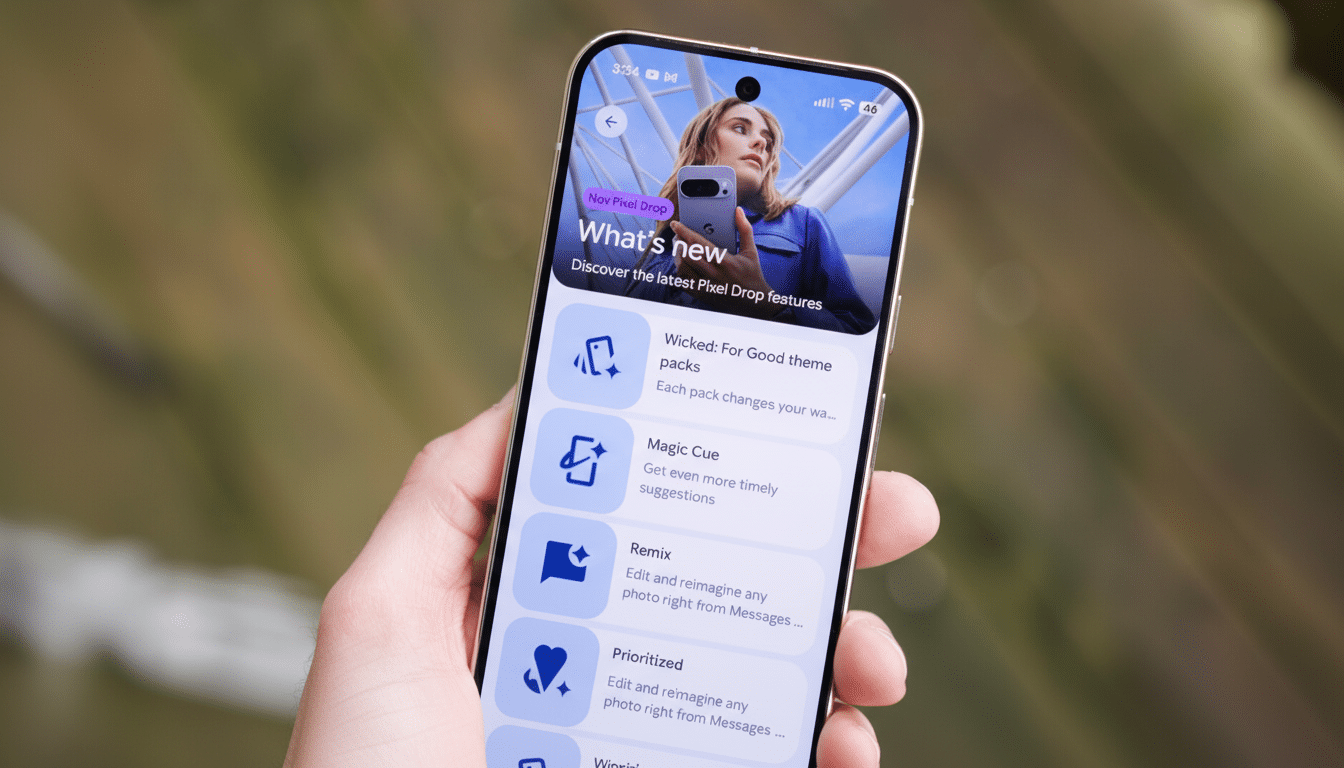A new reader poll with over 2,400 votes offers a withering assessment of Google’s latest Pixel Feature Drop focused on the Wicked theme pack. A solid majority similarly say the update landed as a dud, thanks to ad-like theming, missing features, and a staggered rollout that confused people about what they should get and when, to begin with.
What the survey shows about the Wicked Pixel Drop
The topline number is impossible to ignore: 59 percent of respondents described the Wicked Pixel Drop as disappointing, with nothing in it they wanted. Only 13% in total thought it was positive at all, with 6% “awesome” and 7% “satisfied.” Another 16 percent said they’d wait to pass judgment until all promised features show up on their devices. Perhaps most damning, 12% didn’t even know there had been a November Feature Drop at all — not great news for any campaign that’s meant to generate enthusiasm.

As with all reader polls, the results aren’t scientific but are directional. Still, the sample size and the commonality of sentiment across comments and social threads suggest a real perception problem for a program that once set Pixel phones apart.
Why branded ads felt like features in this update
At the heart of the protest is a Wicked theme pack. Users were not protesting the existence of a branded skin; they were protesting its exclusivity. By launching with a theme system that was little more than a branded option, the entire feature felt like an excuse to deliver promotion rather than personalization. It also achieved a bloatware comparison nod from several commenters, and one of the top-voted posts on Reddit railed against the fact there were no non-branded themes available at launch.
This is not just a question of aesthetic quibbling. System-wide themes change everything under the icons, from wallpapers and background colors to the generation of UI elements. When those surfaces become default canvases for cross-promotion, the distinction between optional marketing and platform design starts to blur together. Pixel owners are especially sensitive to that shift — as they usually buy Google’s phones to avoid overbearing OEM skins.
Promises versus delivery in the Feature Drop rollout
Just as vexing was the disconnect between what the Feature Drop promised and what actually landed on phones on day one. Other users said tools they expected to find weren’t there at all, or were (depending on the model) missing some features, especially throughout the A-series. For the rest, bugs cited by others after updating only added to that “is this it?” response to a release headlined by a tie-in gimmick.
The distance is notable because Feature Drops, a new concept in 2019, planted its flag on worthwhile add-ons — Recorder improvements, Call Screen polish, and camera sleights of hand that made Pixels seem as though they were getting better over time. By contrast, a rollout that revolved around a branded pack and was light on new features was bound to be received poorly.
Awareness and rollout gaps are frustrating users
The 12 percent to whom the Drop didn’t register highlights a distribution problem that has been a longstanding issue. With Google’s regional, carrier, and device rollout strategy — which is absolutely maddening in terms of the message (but perfectly fine from a stability standpoint) — people see this sort of news popping up by region. It’s one thing to announce a slate of features the same day as Apple releases them to developers, but another entirely when a large chunk of your audience can’t even get their hands on those new features for days or weeks after you do. Announcing a slate of features while much of that same feature set is unavailable makes me trust providers like you less, and it also dilutes the impact of the announcement.

Enterprise software companies from Microsoft to Apple have learned to publish clear availability matrices by device and by geography at the time they ship headline updates. Pixel Feature Drops would be well served by the same rigor, especially given marketing campaigns that give you very specific expectations.
What Pixel owners expected from this Feature Drop
“Feedback from the survey paints a clear picture of what this wish list would look like,” Palmer writes, “most obviously as neutral, non-branded options for promotions to be delivered alongside any promotional themes; and that features advertised do arrive on all eligible devices at launch.” The wish list hardly stops there: individuals who responded wanted a straight answer when something is postponed, device-restricted, or only an experimental feature.
Users also gave a signal that they’ll forgive branded content if it’s serving as shotgun to real utility — not at the wheel.
That aligns with bigger-picture industry insights from analysts such as Forrester and Gartner, who both typically write about how customers rely on trust in their providers through reliability, transparency, and actual value delivered. In mobile, that means shipping updates designed to make day-to-day use better first and working on marketing integrations as optional flair.
How Google can recover trust after this Feature Drop
There’s a straightforward path forward:
- Lead the charge with two theme packs — one tasteful, unbranded set, paired with any licensor-driven promotional theme.
- Release a basic device/region availability dashboard prior to each Drop.
- Separate promotional assets from core system components so that they are off by default and clearly labeled.
- When features are staged or server-side, establish clear expectations explicitly in your release notes so users aren’t left scratching their heads.
The survey clarifies one thing neatly: Pixel purchasers aren’t anti-ad out of the gate; they’re anti–bait-and-switch. Get the goods there first, tell the truth about delays, and maintain marketing opt-in. Do that and the next Feature Drop can bring back the excitement that this one squandered.

